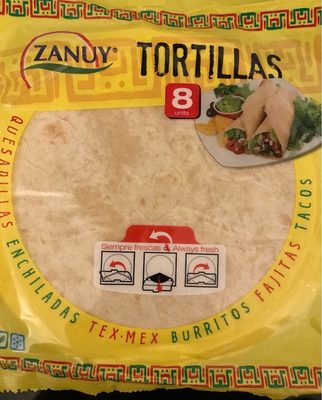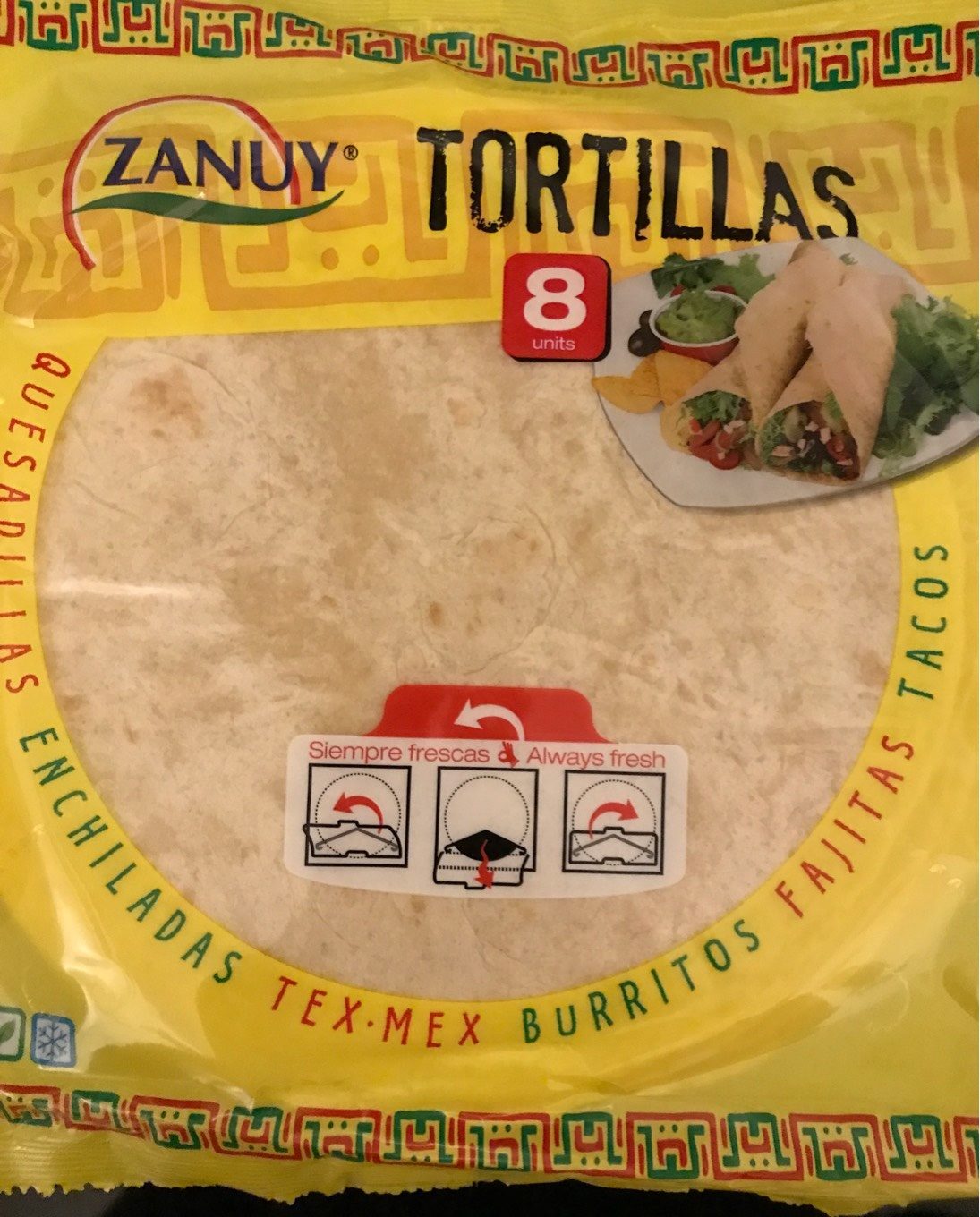Bread - Zanuy Tortillas Wrap 8 Inch 8CT 12 325 GM
This product page is not complete. You can help to complete it by editing it and adding more data from the photos we have, or by taking more photos using the app for Android or iPhone/iPad. Thank you!
×
Barcode: 8411778600026 (EAN / EAN-13)
Brands: Zanuy
Categories: Plant-based foods and beverages, Plant-based foods, Cereals and potatoes, Breads, Flatbreads
Labels, certifications, awards: fr:Entrepreneurs + Engagés
Matching with your preferences
Environment
Packaging
Transportation
Report a problem
Data sources
Product added on by kiliweb
Last edit of product page on by acuario.
Product page also edited by chevalstar, elcoco, openfoodfacts-contributors, yuka.Fpl8OcGFQ8cTIMT7yoAvwj-BKtz4Od98QGFUow, yuka.LLZHZfSgMeA5R8rs-LMz8AOnFs3pKPNXHlQDoQ, yuka.UWZnTElmMHd2cUk2dHNNZC96SGE1KzBvNkwyWVUwRzFEL1ZBSUE9PQ, yuka.WGEwakNid3JodUJVeE1ZM29ERFJ4L05PbjdDWVREaXRMOEVQSWc9PQ.
If the data is incomplete or incorrect, you can complete or correct it by editing this page.










